1) Noah Smith on how the internet got worse:
The term “enshittification” was coined by Cory Doctorow, one of my favorite sci-fi authors, and a keen observer of internet trends. In a Medium post in 2022 and an article in Wired in 2023, he argued that a social media platform has a predictable life-cycle:
-
First it lures a bunch of users with a great (and free) user experience, to create a network effect that makes it hard for people to leave.
-
Then, in order to make money, it attracts a bunch of business customers by doing things like selling user data and spamming users with ads. This makes the user experience worse, but the users are trapped on the platform by a network effect.
-
Finally, the platform tries to extract more value from its business customers by jacking up fees, offering its own competing products, etc. This makes the platform a worse value proposition for the business customers, but because all the users are still on the platform, and because of their own sunk costs, the advertisers can’t leave. This is what Tim O’Reilly calls “eating the ecosystem” — mainly hits businesses.
This is a very plausible model of how social media platforms work. And since platform network effects draw users away from traditional websites, it’s increasingly a description of how the entire public internet works.
But for most regular folks, the only step that matters here is Step 2 — the relentless proliferation of ads and other ways that previous user-friendly social-media platforms monetize their eyeballs.
Google is a great example. For many years, Google was the front page of the internet — a plain, simple text bar where you could type what you were looking for and immediately find websites offering you information about what you wanted. In recent years, though, Google has relentlessly monetized its ad search monopoly by increasing the amount of advertising on the platform. For example, if I want to learn about drones on the Web, there was a time when I could just search for “drones”. Now, the first and second pages of results are all ads trying to get me to buy a drone:
And when I get to the actual search results on the third screen down, it’s all just e-commerce sites offering to sell me more drones. I don’t even get to the Wikipedia link until the fifth screen down!
In other words, using Google is now akin to a video game, where the challenge is to craft a search query that avoids ad spam and gets you to the well-hidden information that you actually want. That’s not the most fun video game in the world, so when I can I now use ChatGPT (which is not yet enshittified). But ChatGPT doesn’t work for a lot of things, and so I’m stuck playing this awful, boring video game of “dodge the ads”.
2) As somewhat of a weather forecast junkie, I loved this, “Weather forecasts have become much more accurate; we now need to make them available to everyone: A four-day forecast today is as accurate as a one-day forecast 30 years ago.”
Three-day forecasts — shown in blue — have been pretty accurate since the 1980s, and have still gotten a lot better over time. Today the accuracy is around 97%.
The biggest improvements we’ve seen are for longer timeframes. By the early 2000s, 5-day forecasts were “highly accurate” and 7-day forecasts are reaching that threshold today. 10-day forecasts aren’t quite there yet but are getting better.
Why have weather forecasts improved?
A few key developments explain these improvements.2
The first big change is that the data has improved. More extensive and higher-resolution observations can be used as inputs into the weather models. This is because we have more and better satellite data, and because land-based stations are covering many more areas around the globe, and at a higher density. The precision of these instruments has improved, too.
These observations are then fed into numerical prediction models to forecast the weather. That brings us to the next two developments. The computers on which these models are run have gotten much faster. Faster speeds are crucial: the Met Office now chunks the world into grids of smaller and smaller squares. While they once modeled the world in 90-kilometer-wide squares, they are now down to a grid of 1.5-kilometer squares. That means many more calculations need to be run to get this high-resolution map. The methods to turn the observations into model outputs have also improved. We’ve gone from very simple visions of the world to methods that can capture the complexity of these systems in detail.
The final crucial factor is how these forecasts are communicated. Not long ago, you could only get daily updates in the daily newspaper. With the rise of radio and TV, you could get a few notices per day. Now, we can get minute-by-minute updates online or on our smartphones.
3) This was good. Everything in moderation… including sunscreen, “Against Sunscreen Absolutism: Moderate sun exposure can be good for you. Why won’t American experts acknowledge that?”
Then, in 2023, a consortium of Australian public-health groups did something surprising: It issued new advice that takes careful account, for the first time, of the sun’s positive contributions. The advice itself may not seem revolutionary—experts now say that people at the lowest risk of skin cancer should spend ample time outdoors—but the idea at its core marked a radical departure from decades of public-health messaging. “Completely avoiding sun exposure is not optimal for health,” read the groups’ position statement, which extensively cites a growing body of research. Yes, UV rays cause skin cancer, but for some, too much shade can be just as harmful as too much sun.
It’s long been known that sun exposure triggers vitamin D production in the skin, and that low levels of vitamin D are associated with increased rates of stroke, heart attack, diabetes, cancer, Alzheimer’s, depression, osteoporosis, and many other diseases. It was natural to assume that vitamin D was responsible for these outcomes. “Imagine a treatment that could build bones, strengthen the immune system and lower the risks of illnesses like diabetes, heart and kidney disease, high blood pressure and cancer,” The New York Times wrote in 2010. “Some research suggests that such a wonder treatment already exists. It’s vitamin D.” By 2020, more than one in six adults were on that wonder treatment in the form of daily supplements, which promise to deliver the sun’s benefits without its dangers.
But sunlight in a pill has turned out to be a spectacular failure. In a large clinical trial that began in 2011, some 26,000 older adults were randomly assigned to receive either daily vitamin D pills or placebos, and were then followed for an average of five years. The study’s results were published in The New England Journal of Medicine two years ago. An accompanying editorial, with the headline “A Decisive Verdict on Vitamin D Supplementation,” noted that no benefits whatsoever had been found for any of the health conditions that the study tracked. “Vitamin D supplementation did not prevent cancer or cardiovascular disease, prevent falls, improve cognitive function, reduce atrial fibrillation, change body composition, reduce migraine frequency, improve stroke outcomes, decrease age-related macular degeneration, or reduce knee pain,” the journal said. “People should stop taking vitamin D supplements to prevent major diseases or extend life.”
Australia’s new guidance is in part a recognition of this reality. It’s also the result of our improved understanding of the disparate mechanisms through which sunlight affects health. Some of them are intuitive: Bright morning light, filtered through the eyes, helps regulate our circadian rhythms, improving energy, mood, and sleep. But the systemic effects of UV light operate through entirely different pathways that have been less well understood by the public, and even many health professionals. In recent years, that science has received more attention, strengthening conviction in sunlight’s possibly irreplaceable benefits. In 2019, an international collection of researchers issued a call to arms with the headline “Insufficient Sun Exposure Has Become a Real Public Health Problem.”
4) This is encouraging, “Giant Batteries Are Transforming the Way the U.S. Uses Electricity: They’re delivering solar power after dark in California and helping to stabilize grids in other states. And the technology is expanding rapidly.” Gift article with cool visuals, check it out. And a nice summary tweet.
5) Yglesias on, “How to make a difference in the 2024 election”
That said, notwithstanding my love for the Le Tigre song “Get Off The Internet,” I think it’s actually true that two of the best things you can do to defeat the MAGA movement do, in fact, happen online: giving money intelligently and posting mindfully.
I’m of course not against finding a way to volunteer for political campaigns, especially if you live in a swing state or a place with a contested Senate race or near a frontline House district. But I do think there is a romance to political volunteerism that is not borne out by the facts. There’s a reason commercial enterprises don’t typically market their products by having strangers knock on doors, telling people about the Verizon 5G network. Advertising campaigns and free communication in the media are much more efficient ways to get a message across. There can be lots of benefits to volunteering, including that you may build your own sense of agency or be able to recruit friends to do it with you and create longer-term social capital. I definitely don’t discourage it.
But if you’re really worried, give money. If you’re interested in maximizing your efficacy, give money. If you want to dedicate time and not just money to good causes, then consider getting a part-time job and giving that money.
Something that I think isn’t widely understood is that hard money contributions to political candidates are a lot more valuable, dollar-for-dollar, than Super PAC contributions. Part of this is because the coordination rules, though full of holes, are genuinely not meaningless, and it’s a lot easier for the campaign proper to use resources effectively. The biggest reason, though, is that campaigns receive (by law) preferential rates from television stations. So $1 million of small contributions genuinely buys more ads than $1 million from an outside group. And last but not least, as a donor to a campaign, you can communicate with the candidate you are supporting and urge them to emphasize electability and winning. A lot of candidates believe that hard-core progressive messages are needed to keep the money flowing, and the best way to change that is to send money and speak your mind.
But give money to who? One obvious choice is Joe Biden’s re-election campaign. If you want to beat Trump, then supporting Trump’s opponent is a very good idea.
That said, money is more valuable down-ballot, and I also don’t think you need me to tell you that Trump is running against Biden. After consulting with the smartest people I know in the business, my recommendation is to prioritize eight House seats, a couple of state supreme court elections, and the best funder of abortion ballot campaigns. More details below.
6) Sad. “They gave local news away for free. Virtually nobody wanted it.”
When 2,529 people were offered a free subscription to their local newspapers, the Pittsburgh Post-Gazette and the Philadelphia Inquirer, only forty-four accepted—less than 2 percent—according to an academic study set to be published this year in the American Journal of Political Science.
Dan Hopkins, a political science professor at the University of Pennsylvania, conducted the study, titled “Unsubscribed and Undemanding,” in 2021. The purpose of the research, Hopkins said, was to assess practical ways to increase interest in local or regional news for an audience that seems more interested in national, partisan media outlets. (The pool of those offered subscriptions was made up of locals who had previously responded to political surveys.) Hopkins said that he was “surprised and dismayed” when he realized that only 1.7 percent had accepted the free subscription.
The findings add context to what has been a difficult start to 2024 for American media. There have been hundreds of layoffs across the industry—the Washington Post, Wall Street Journal, Los Angeles Times, Sports Illustrated, and Business Insider, among others, have all downsized. At the local level, half the counties in America have either one news outlet or none at all, according to Medill’s 2023 State of Local News Project. Of those counties, over two hundred are “news deserts,” without any local media whatsoever.
7) I always enjoy reading Johann Hari, “A Year on Ozempic Taught Me We’re Thinking About Obesity All Wrong”
The primary reason we have gained weight at a pace unprecedented in human history is that our diets have radically changed in ways that have deeply undermined our ability to feel sated. My father grew up in a village in the Swiss mountains, where he ate fresh, whole foods that had been cooked from scratch and prepared on the day they were eaten. But in the 30 years between his childhood and mine, in the suburbs of London, the nature of food transformed across the Western world. He was horrified to see that almost everything I ate was reheated and heavily processed. The evidence is clear that the kind of food my father grew up eating quickly makes you feel full. But the kind of food I grew up eating, much of which is made in factories, often with artificial chemicals, left me feeling empty and as if I had a hole in my stomach. In a recent study of what American children eat, ultraprocessed food was found to make up 67 percent of their daily diet. This kind of food makes you want to eat more and more. Satiety comes late, if at all.
One scientific experiment — which I have nicknamed Cheesecake Park — seemed to me to crystallize this effect. Paul Kenny, a neuroscientist at Mount Sinai Hospital in New York, grew up in Ireland. After he moved in 2000 to the United States, when he was in his 20s, he gained 30 pounds in two years. He began to wonder if the American diet has some kind of strange effect on our brains and our cravings, so he designed an experiment to test it. He and his colleague Paul Johnson raised a group of rats in a cage and gave them an abundant supply of healthy, balanced rat chow made out of the kind of food rats had been eating for a very long time. The rats would eat it when they were hungry, and then they seemed to feel sated and stopped. They did not become fat.
But then Dr. Kenny and his colleague exposed the rats to an American diet: fried bacon, Snickers bars, cheesecake and other treats. They went crazy for it. The rats would hurl themselves into the cheesecake, gorge themselves and emerge with their faces and whiskers totally slicked with it. They quickly lost almost all interest in the healthy food, and the restraint they used to show around healthy food disappeared. Within six weeks, their obesity rates soared.
After this change, Dr. Kenny and his colleague tweaked the experiment again (in a way that seems cruel to me, a former KFC addict). They took all the processed food away and gave the rats their old healthy diet. Dr. Kenny was confident that they would eat more of it, proving that processed food had expanded their appetites. But something stranger happened. It was as though the rats no longer recognized healthy food as food at all, and they barely ate it. Only when they were starving did they reluctantly start to consume it again.
Though Dr. Kenny’s study was in rats, we can see forms of this behavior everywhere. We are all living in Cheesecake Park — and the satiety-stealing effect of industrially assembled food is evidently what has created the need for these medications. Drugs like Ozempic work precisely by making us feel full. Carel le Roux, a scientist whose research was important to the development of these drugs, says they boost what he and others once called “satiety hormones.”
8) Jonathan Bernstein on the Democrats saving Mike Johnson:
That leaves the Democrats, who saved Johnson after letting former McCarthy be defeated last year. The situations seem similar; last October a handful of Republicans tried to oust McCarthy after he first agreed to a debt limit increase and then an extension to expiring spending bills, thus preventing a debt limit breach and then a governnment shutdown. This time, Johnson allowed a vote on Ukraine aid. In each of these cases, a House majority favored the bill – but enough Republicans opposed the measures that they would have failed without Democratic votes.
Some of the difference, according to reporting, was that Johnson simply proved more trustworthy than McCarthy.
The truth is, however, that these seemingly similar situations were actually quite different. The impasses that McCarthy eventually “solved” were phony ones that he and other Republicans created out of nothing. Republicans aren’t actually in favor of the US defaulting on its debt or the government shutting down; they were merely using those threats to blackmail Democrats into agreeing to policy concessions. And McCarthy was – at least until he wasn’t – fully on board with that strategy, which Democrats were correct to oppose.
Indeed, given that the (supposedly unpopular) debt limit vote is properly the responsibility of the majority party and that the spending bills were real compromises, Democrats were doing McCarthy a favor by supplying the votes.
On the other hand, quite a few Republicans appeared to sincerely oppose aiding Ukraine, while Democrats were eager to vote for it. Democrats may not have liked the policy implications of the long delay, but Johnson wasn’t manuevering them into casting tough votes, as McCarthy had. No wonder they were eager to dump McCarthy. And that they are now willing to live with Johnson.
So far. Congress still have a number of key deadlines between now and the election, the most notable of which is the end of the fiscal year, at which point temporary spending extensions will once again be needed to prevent a government shutdown only weeks before the election.
The normal procedure when Congress can’t finish it’s work is to simply pass short-term extensions – in this case, until they return for a lame-duck session after the election. Radical Republicans, however, may push for a government shutdown – and for other popular programs with upcoming deadlines to expire, causing chaos during the peak of the campaign, on the assumption that the Democratic president will suffer.
House Democrats are basically acting sensibly in bailing Johnson out in the aftermath of the Ukraine vote. But to keep saving him from the next round of radical Republican sniping, Democrats should insist on, well, business as usual. Either Congress gets things done on time, or Johnson allows votes on temporary extensions for spending bills, farm programs, the FAA, and anything else that’s needed.
If not? Well, there’s still plenty of time in this Congress for another Speaker.
9) I heard about this first-hand! The 4-year old victim is the daughter of a good friend of mine (and NCSU PS grad), “Rabies alert: 4-year-old girl bitten by rabid fox in Raleigh neighborhood: Wake County Public Health has issued a rabies notice after a rabid fox bit a child in a Raleigh neighborhood.”
10) Some cool social science, “The Causal Effects of a Trump Endorsement on Voter Preferences in a General Election Scenario”
Former President Trump’s persistent influence over Republican politics divides those who argue that he mobilizes otherwise apathetic voters against those contending he mobilizes Democrats at down-ballot Republicans’ expense. Scholars and pundits alike question whether policy still matters in the face of increasingly strong personas like the former president’s. Using a survey experiment, we find suggestive evidence that Trump’s endorsement in a general election reduces the likelihood of voting for a hypothetical Republican candidate. We also test the effect of policy stances and find evidence that Republican respondents value policy stances over an endorsement, but Democrats show no signs of prioritizing one more than the other. However, when shown a hypothetical candidate with unorthodox policy stances, the mere mention of a Trump endorsement leads members of both parties to demonstrate significant changes in the likelihood of voting for that candidate. Ultimately, we show that elite signals can attenuate support derived from policies.
11) Very cool study on personality tests from Clearer Thinking:
Key takeaways from our study
-
Trait Distribution: Most personality traits approximately formed bell curves, meaning that most people fall near the middle on each trait, suggesting binary categorization (as is typical with MBTI-style tests) might introduce substantial noise.
-
Jungian (MBTI-style) Limitations: The Jungian 4-letter framework showed less predictive accuracy than the Big Five, mostly due to its use of binary types (splitting participants into letters like I vs. E and N vs. S) and its failure to measure Neuroticism. By adapting the Jungian framework to give continuous scores (rather than categories) and excluding Neuroticism from the Big Five, then the predictive gap between the two frameworks narrows. However, even with these adjustments, the Big Five (without Neuroticism) still slightly outperformed the modified Jungian test (with continuous scores, not binary types).
-
Cross-framework Relations: Almost every Jungian trait correlated with a specific Big Five trait: the Jungian Extraversion/Introversion aligned with Big Five’s Extraversion, Intuition/Sensing with Openness, and Feeling/Thinking with Agreeableness. However, the Judging/Perceiving trait was associated with three of the Big Five traits.
-
Enneagram’s Surprisingly Good Performance: Despite its simplicity, the Enneagram binary (using only the 1-digit Enneagram variable – e.g., Type 9) performed better than the binary Jungian Type at predicting life outcomes. However, the Enneagram still underperformed the Big Five.
-
Participant Perception: Despite the Jungian test’s lower predictive accuracy, participants felt better after reading their Jungian assessments than their Big Five assessment, likely due to the Jungian test’s positive framing — it feels better to be called “Thinking” than someone “with low Agreeableness”.
In short, our study suggests that if you care about how well a personality test can predict outcomes in your life (or other people’s), then the Big Five test is likely superior to a Jungian (MBTI-style) and Enneagram approach. It also suggests that dichotomizing traits into binaries (rather than using continuous scores) substantially reduces predictive accuracy for these tests.
And hooray for me for being about 1st percentile in neuroticism.
12) Interesting, “Powerful Psychedelic Gains Renewed Attention as a Treatment for Opioid Addiction: New research is stirring interest in ibogaine, which appears to help ease the agony of detox and prevent relapse. Used in other countries, it remains illegal in the U.S.”
Ibogaine, a formidable psychedelic made from the root of a shrub native to Central Africa, is not for the timid. It unleashes a harrowing trip that can last more than 24 hours, and the drug can cause sudden cardiac arrest and death.
But scientists who have studied ibogaine have reported startling findings. According to a number of small studies, between a third and two-thirds of the people who were addicted to opioids or crack cocaine and were treated with the compound in a therapeutic setting were effectively cured of their habits, many after just a single session.
Ibogaine appears to provide two seemingly distinct benefits. It quells the agony of opioid withdrawal and cravings and then gives patients a born-again-style zeal for sobriety.
Now, after decades in the shadows, and with opioid overdose deaths exceeding 100,000 a year, ibogaine is drawing a surge of fresh interest from researchers who believe it has the potential to treat opioid use disorder.
“It’s not an exaggeration to say that ibogaine saved my life, allowed me to make amends with the people I hurt and helped me learn to love myself again,” said Jessica Blackburn, 37, who is recovering from heroin addiction and has been sober for eight years. “My biggest frustration is that more people don’t have access to it.”
That’s because ibogaine is illegal in the United States. Patients have to go abroad for ibogaine therapy, often at unregulated clinics that provide little medical oversight.
13) I found the struggle of girls’ HS basketball in NC very interesting:
Whatever it is, in the 2023-24 season, a theme has emerged in girls’ basketball and it doesn’t appear to be going anywhere anytime soon:
You’re either really good these days — or you’re not.
The gap between North Carolina’s haves and have-nots has perhaps never been wider.
Just two years ago, for example, West Mecklenburg didn’t win a game, but the Hawks’ average margin of defeat was about 25 points per game.
Two years ago, West Meck’s conference had four teams with a winning record and the Hawks were the only team with fewer than seven wins.
This year?
Three league teams have three or fewer wins, and the scores in that Queen City 3A/4A conference — and around the state — are often eye-popping.
These are some real scores that have been reported to The Charlotte Observer this season: 96-7, 97-5, 102-5. Those types of scores make some other results — 83-34, 74-27, 90-23 — almost seem normal.
And those types of scores are reported every Tuesday and Friday.
“I don’t know what a coach thinks about when you lose 109-5,” Hopewell’s Brown said. “One thing is (your team’s) morale. We address it by saying, ‘We’ve got to put it behind us. We’ve got to persevere.’ That’s an adverse situation. But even though we’re taking a lot of lopsided defeats, we haven’t had the issue with bad body language, demeanor and lack of hope. Anybody that has seen us play knows we play from beginning to end, 32 minutes, hard. That’s whether we’re up or down by 80, 40, 20, 15.”
Where did the girls go?
Area coaches, like Brown, said the Charlotte area has a smaller pool of players than in the past and that more talented players — sometimes directed by summer basketball coaches — are finding ways to come together on a handful of teams.
Taking good players from other schools makes those teams weaker, coaches say, and creates that situation where you have no middle class.
Charlotte-Mecklenburg Schools did not respond to an Observer request for girls’ basketball participation figures, but anecdotally, coaches have said fewer junior varsity teams are playing and there are fewer players on many varsity teams now, too.
14) It really bugs me that a piece of art can be seen as not all that special and valued at $17,000. Then figure out it was painted by Rembrandt and it’s worth $14 million. It’s either great art or it’s not, regardless of who painted it. In this case, also a really interesting debate about whether it’s really a Rembrandt. A lot going on here visually you should check out– gift link.
15) This is pretty wild, “Gut Bacteria May Play Role in Vision Loss”
Summary: Researchers found a surprising connection between gut bacteria and inherited eye diseases, potentially opening new treatment avenues using antimicrobials. They discovered that a specific genetic mutation could weaken the body’s defenses, allowing gut bacteria to infiltrate the eye and cause sight loss.
The study focused on the CRB1 gene, crucial for maintaining the integrity of the eye’s and gut’s barriers. By treating affected mice with antimicrobials, the team successfully prevented blindness without repairing the damaged cellular barriers, suggesting a novel treatment strategy for CRB1-linked eye diseases.
Key Facts:
- The study identifies a link between gut bacteria and blindness in mice with a specific genetic mutation affecting the CRB1 gene.
- Antimicrobial treatment prevented sight loss in mice, indicating a potential new therapy for inherited eye diseases.
- This research could transform the treatment landscape for CRB1-associated eye conditions and possibly extend to other eye diseases.
16) This was a really good piece on suicide in the Morning newsletter a while back:
But something is changing in the United States, where the suicide rate has risen by about 35 percent over two decades, with deaths approaching 50,000 annually. The U.S. is a glaring exception among wealthy countries; globally, the suicide rate has been dropping steeply and steadily.
Barriers are in the works on the William Howard Taft Bridge in Washington, D.C., the Penobscot Narrows Bridge in Maine and several Rhode Island bridges. Universities in Texas and Florida have budgeted millions of dollars for barriers on high structures. Scores of communities are debating similar steps.
Research has demonstrated that suicide is most often an impulsive act, with a period of acute risk that passes in hours, or even minutes. Contrary to what many assume, people who survive suicide attempts often go on to do well: Nine out of 10 of them do not die by suicide.
Policymakers, it seems, are paying attention. I have been reporting on mental health for The New York Times for two years, and in today’s newsletter I will look at promising, evidence-based efforts to prevent suicide.
A single element
For generations, psychiatrists believed that, in the words of the British researcher Norman Kreitman, “anyone bent on self-destruction must eventually succeed.”
Then something strange and wonderful happened: Midway through the 1960s, the annual number of suicides in Britain began dropping — by 35 percent in the following years — even as tolls crept up in other parts of Europe.
No one could say why. Had medicine improved, so that more people survived poisoning? Were antidepressant medications bringing down levels of despair? Had life in Britain just gotten better?
The real explanation, Kreitman discovered, was none of these. The drop in suicides had come about almost by accident: As the United Kingdom phased out coal gas from its supply to household stoves, levels of carbon monoxide decreased. Suicide by gas accounted for almost half of the suicides in 1960.
It turns out that blocking access to a single lethal means — if it is the right one — can make a huge difference.
The strategy that arose from this realization is known as “means restriction” or “means safety,” and vast natural experiments have borne it out. When Sri Lanka restricted the import of toxic pesticides, which people had ingested in moments of crisis, its suicide rate dropped by half over the next decade.
Arresting an urge
More than half of U.S. suicides are carried out with firearms. Guns are a reliably deadly means, resulting in death in about 90 percent of attempted suicides; intentional overdoses, by contrast, result in death about 3 percent of the time.
When an attempt fails, “these folks generally survive and go on to get past these thoughts, go on to live happy, full lives,” said Dr. Paul Nestadt, a suicide researcher at Johns Hopkins. “If you are a gun owner, that brief moment where the suicidal thoughts exceed the desire to be alive for tomorrow, that’s all it takes.”
Other countries, like Israel, have brought down suicide rates dramatically by restricting access to guns. But in the U.S., about 400 million guns are circulating in private hands, said Michael Anestis, who leads the New Jersey Gun Violence Research Center. “We don’t know where they are, and even if we did, we would have no way of getting them,” he said.
Twenty-one states have passed red flag laws, which allow the authorities to remove firearms temporarily from individuals identified as dangerous to themselves or others. A follow-up study found that firearm suicides dropped 7.5 percent in Indiana in the decade after the law’s passage; Connecticut saw a 13.7 percent drop over eight years as the state began to enforce the law in earnest.
Another promising approach is to change gun storage habits, which Anestis likened to public health campaigns around smoking or drunken driving. He threw out some ideas, including financial incentives, such as providing gun owners with a hefty coupon for a gun safe, and encouraging gun shops to install lockers so people could temporarily store their guns outside of the home.
Even brief counseling sessions can change a gun owner’s habits, trials show. Anestis recalled one subject who was particularly dismissive of the counselor’s advice but returned six months later with a different outlook. “Since I was last here, I broke up with my fiancé and I let my brother hold my guns. If I hadn’t done that, I’m pretty sure I’d be dead,” the subject told researchers.
17) Good NYT Editorial on campus speech and protests:
The point of protest is to break such rules, of course, and to disrupt daily routines so profoundly as to grab on to the world’s attention and sympathies. Campuses should be able to tolerate some degree of disruption, which is inherent to any protest. That makes it even more important that school administrators respond when the permissible limits for speech are violated.
During the current demonstrations, a lack of accountability has helped produce a crisis.
It has left some Jewish students feeling systematically harassed. It has deprived many students of access to parts of campus life. On campuses where in-person classes or commencement exercises were canceled, students have watched their basic expectations for a university experience evaporate. And at times, the protesters themselves have been directly endangered — the disarray and violence of the past weeks has been escalated by the continued involvement of both the police and external agitators.
Amid the protests, there has been much discussion of both antisemitism and Islamophobia, and when the line is crossed into hate speech. There are profound risks to imposing overly expansive definitions of inappropriate speech, and universities have been rightly chided for doing so in the past. But it should be easy to agree that no student, faculty member, administrator or university staff member on a campus should be threatened or intimidated. School policies should reflect that, and they should be enforced when necessary.
In the longer term, a lack of clarity around acceptable forms of expression, and a failure to hold those who break those norms to account, has opened up the pursuit of higher learning to the whims of those motivated by hypocrisy and cynicism…
The absence of steady and principled leadership is what opened the campus gates to such cynicism in the first place. For several years, many university leaders have failed to act as their students and faculty have shown ever greater readiness to block an expanding range of views that they deem wrong or beyond the pale. Some scholars report that this has had a chilling effect on their work, making them less willing to participate in the academy or in the wider world of public discourse. The price of pushing boundaries, particularly with more conservative ideas, has become higher and higher.
Schools ought to be teaching their students that there is as much courage in listening as there is in speaking up. It has not gone unnoticed — on campuses but also by members of Congress and by the public writ large — that many of those who are now demanding the right to protest have previously sought to curtail the speech of those whom they declared hateful.
Establishing a culture of openness and free expression is crucial to the mission of educational institutions. That includes clear guardrails on conduct and enforcement of those guardrails, regardless of the speaker or the topic. Doing so would not only help restore order on college campuses today, but would also strengthen the cultural bedrock of higher education for generations to come.
18) Science/biotechnology for the win again, “UK toddler has hearing restored in world first gene therapy trial”
A British toddler has had her hearing restored after becoming the first person in the world to take part in a pioneering gene therapy trial, in a development that doctors say marks a new era in treating deafness.
Opal Sandy was born unable to hear anything due to auditory neuropathy, a condition that disrupts nerve impulses travelling from the inner ear to the brain and can be caused by a faulty gene.
But after receiving an infusion containing a working copy of the gene during groundbreaking surgery that took just 16 minutes, the 18-month-old can hear almost perfectly and enjoys playing with toy drums.
19) Excellent from Thomas Mills, “Rules for vouchers: If we’re going to have state-funded private schools, they need standards and conditions.”
North Carolina Republicans came into power screaming that our public schools are broken and promptly began cutting resources. They would like to shift the financial responsibility for schools to local government, but North Carolina’s constitution says that the state has the responsibility to provide children with a sound basic education. Now, 13 years after they first began writing public school budgets and eight years in control of the Department of Public Instruction, they are still claiming schools are broken. If that’s true, then they broke them, or at the very least, they have failed to fix them. For all of their complaints about public schools, the one thing they have never tried is adequately funding them.
Republicans claim that they want to make schools compete for students. In reality, they want to provide tax breaks for the rich because they don’t believe those who benefit the most from our economic system and society have any obligation to those who struggle. They claimed for years that the purpose of vouchers was to allow financially struggling families to send their children to private schools. Now, they are giving vouchers to families who already send their children to private schools in a direct transfer of money from underfunded school systems to the state’s wealthiest families. Yeah, I’m opposed to that.
I also don’t believe we should be funding private schools that discriminate. Any school that denies entry based on race, religion, sexual orientation, gender or national origin should not receive public funds. If we’re going to ask people who meet those criteria to pay taxes, they should not be forced to have their tax dollars used against them.
Private schools and charters should be held to the same standards and regulations as public schools if they are accepting tax dollars. If public school teachers must post their lesson plans to increase accountability, private school teachers should be required to do the same. Test scores of private schools that accept public money should be made public. Teacher and administrative salaries should be publicly available. Private schools that accept tax dollars should be subject to audits from the state auditor to ensure our money is not being misspent. We should watch over our tax dollars in private schools just as carefully as we watch them in other government programs.
20) Always love reading deBoer on disability issues:
And it’s difference that, I think, needs to really be pulled apart here. Because Rosenbaum is guilty of a kind of slippage that has become very common to disability talk: conjoined twins are normal when normal is a desirable thing to be and not normal when normal is not a desirable thing to be. It’s reminiscent of one of the default images of disability discourse in the 21st century, an autistic person who wants their autism to not result in any special treatment or consideration whatsoever, except in those moments when they think their autism entitles them to special treatment or consideration. It’s the era of “my condition is not a disability, now give me accommodation for my disability or you’re a bigot.”
Throughout, Rosenbaum suggests that normalcy is a bad thing, arguing that the pursuit of normal has hurt the rights of conjoined twins (including through surgically separating them, which she disdains) and of trans people. She goes so far as to mock the Hensel twins for their performance of normalcy; no word on whether it’s possible that they’re acting that way because that is what is natural or comfortable or best for them. That “normal” is not a status to be pursued or lionized is a matter of holy writ in many corners of the disability activist world. And yet you’ll note that it’s also considered a terrible insult to suggest that the disabled are not normal, that to call them abnormal or different or unusual is also assumed to be offensive. I would argue that this is internally contradictory – if you reject normalcy as a goal state then you should embrace abnormality – but this is one of many arguments in this domain that I’ve clearly lost.
I suspect that in fact a good portion of the disabled community writ large wants exactly to be normal, to receive normal treatment, to live normal lives. I suspect that very many of them want elevators and braille and closed captions and a legal doctrine of reasonable accommodation so that they can better achieve normal existence. And I further suspect that the disability activist class has embraced the rejection of normalcy in large part because that class is largely made up of people with the least-debilitating, most-manageable conditions, who suffer little from being not-normal and therefore have far less reason to aspire to normal experience than the average disabled person. I would argue that an essential part of evaluating the claims of a disability activist is to assess to what degree their condition has rendered them unable to live without severe restriction or discomfort. It’s not that, say, the self-diagnosed autistic Harvard student with big ideas and an unflinching attitude doesn’t have anything useful to say or isn’t really disabled. (I mean, they may not be, but who’s to say.) The problem is that most people with disabilities are a) not activists and b) do not confront disability through abstract and deracinated concepts of societal respect and normative judgment but rather through the painful experience of navigating the world with physical and mental impairments (disabilities, problems, disorders, less good things) that hurt them. Meanwhile, we live in a culture where diagnosis increasingly collapses into yet another stab at identity. And the loudest tend to be the ones who have the ability to slip back into normal when they want.
21) Ugh. “Schools in One Virginia County to Reinstate Confederate Names”
After a meeting that lasted for hours, the Shenandoah County school board voted early Friday morning to restore the names of three Confederate officers to schools in the district.
With the vote, the district appears to be the first in the country to return Confederate names to schools that had removed them after the summer of 2020, according to researchers at the Montgomery, Ala.-based Equal Justice Initiative.
The vote rolled back a decision made four years ago, when the killing of George Floyd prompted nationwide demands for a racial reckoning. At a virtual meeting in July 2020, the summer of pandemic and protests, the board voted 5-1 to drop the names of two schools — Ashby-Lee Elementary and Stonewall Jackson High — that it deemed incompatible with a recently passed resolution condemning racism. The schools were renamed the next year as Honey Run and Mountain View.
But a fury had been unleashed in the rural county in the mountains of Virginia. People crowded into school board meetings, denouncing the name changes as secretive and rushed through with little advance notice, and voicing deeper resentments about cultural shifts they saw as being foisted upon them.











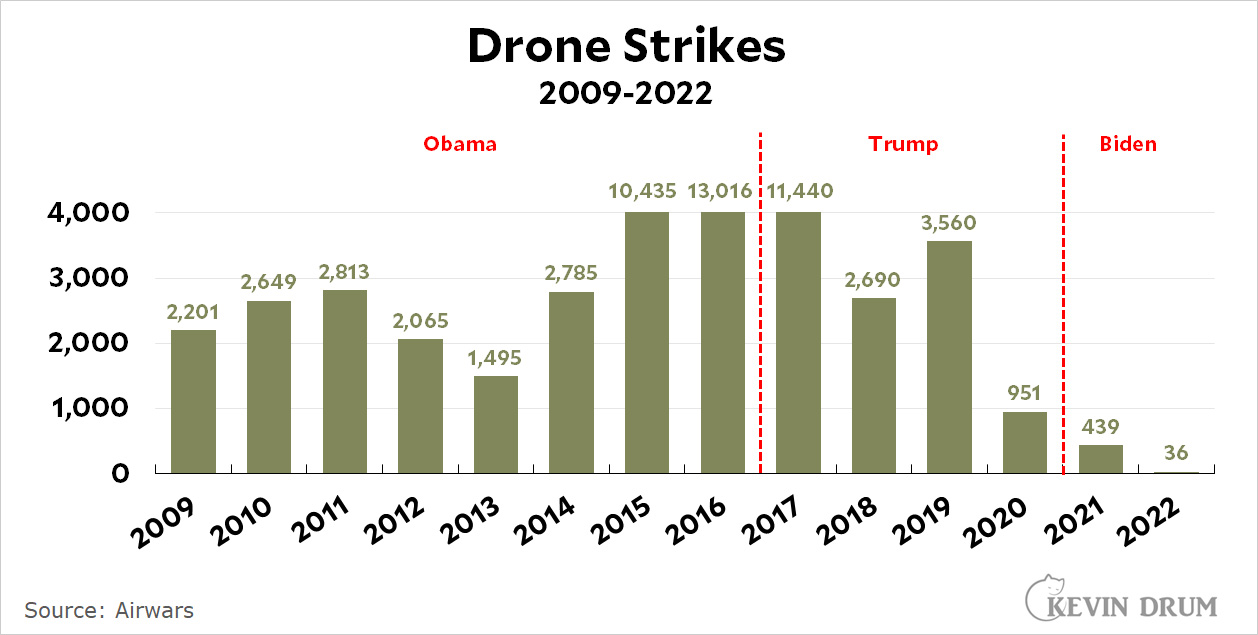
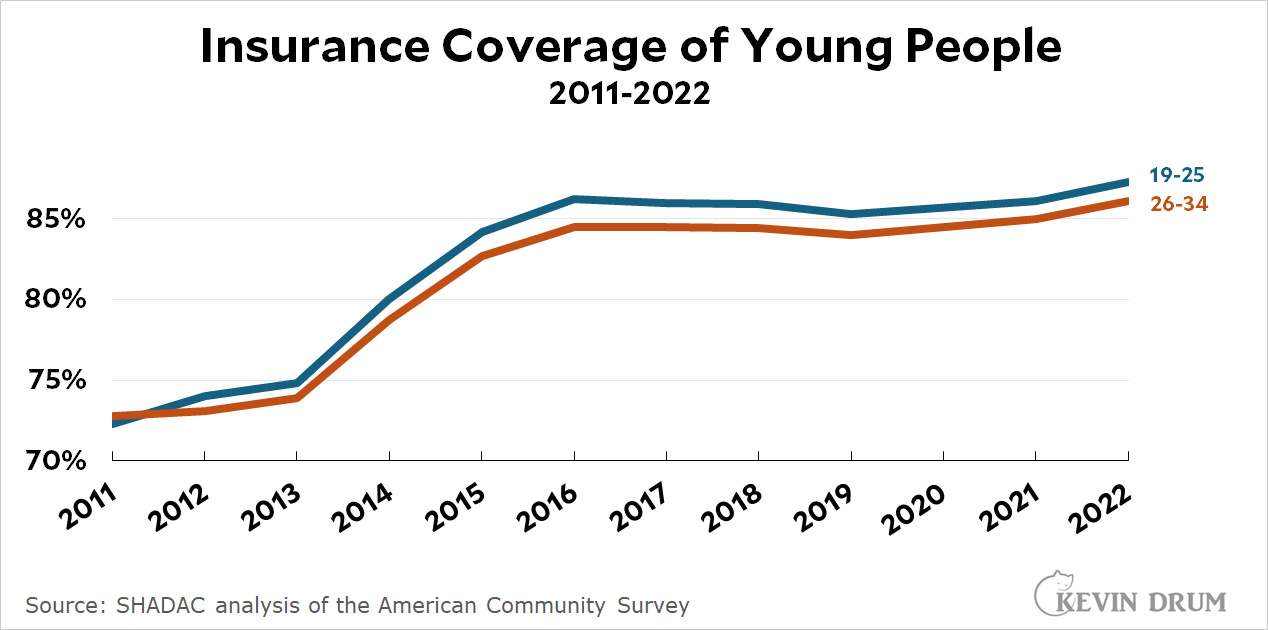


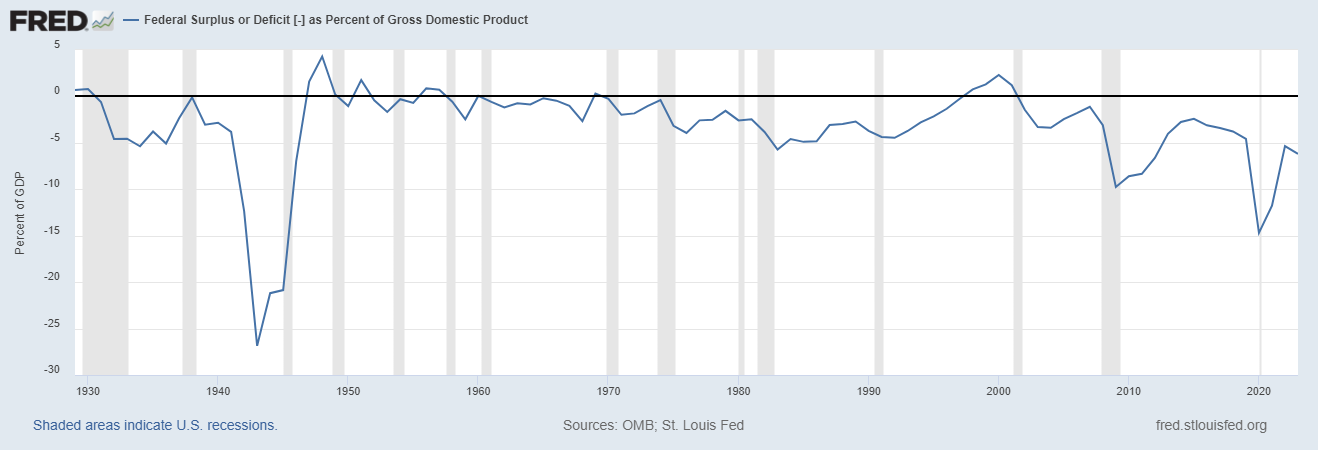
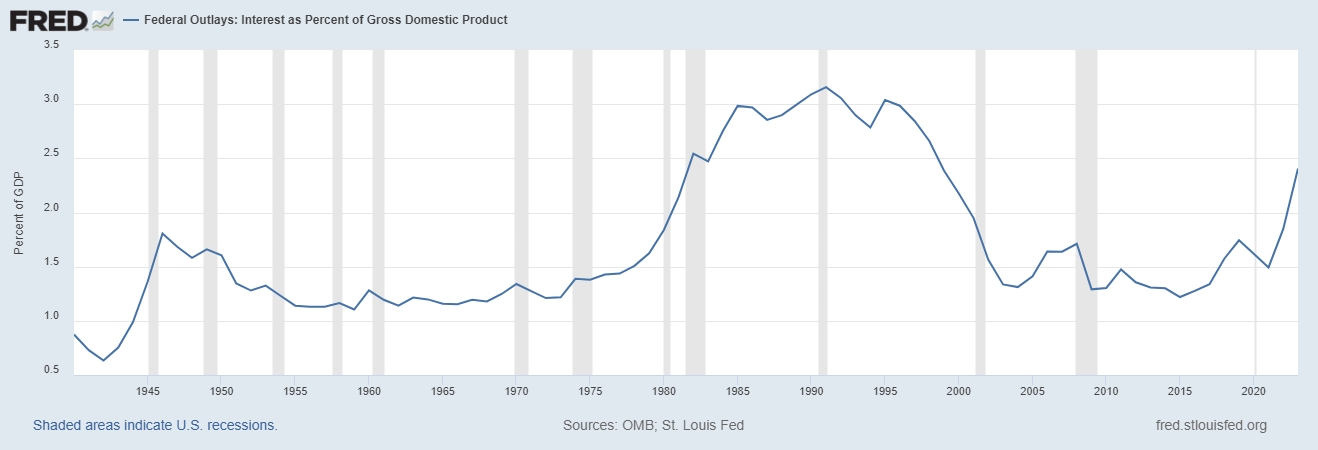
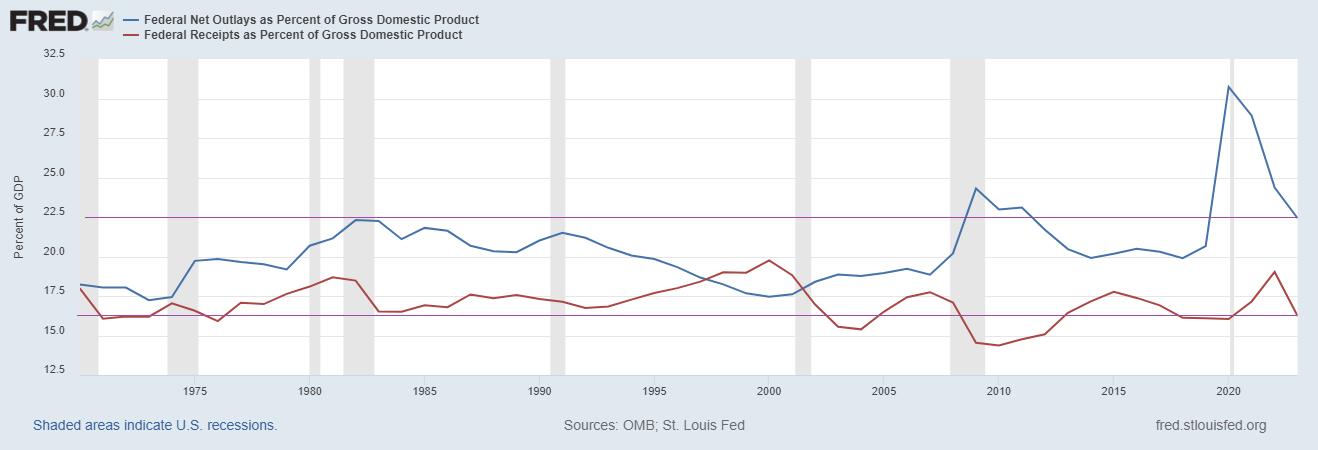
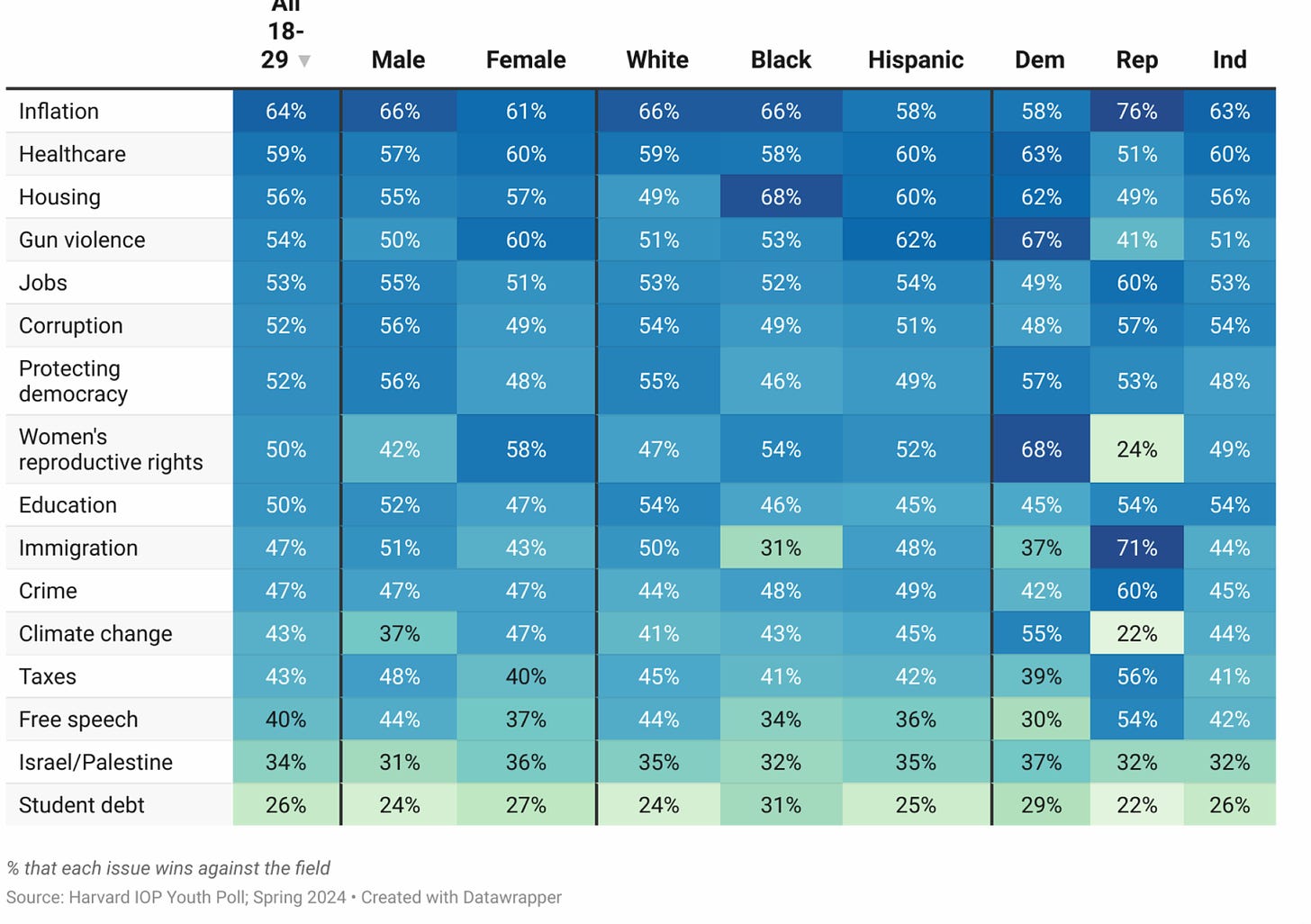
Recent Comments